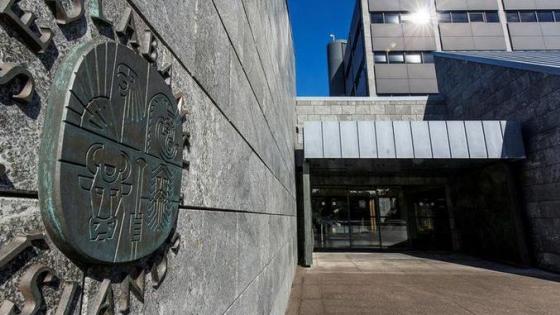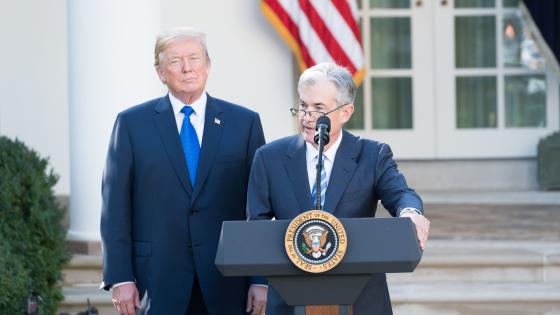Central banks have continued to accumulate new job functions since the crisis of 2008. Recent events in Iceland point to the risk of such domain expansion.
On 30 April 2019, the largest exporter in Iceland filed a complaint with the police against current and former senior central bank staff, including the sitting governor, alleging criminal misconduct in the execution of their duties – the latest step in a long and acrimonious saga.
Any regulatory agency will make decisions that some consider to be mistakes, and when it does, the legal and political domains can step in, smoothing feathers and enforcing resolution. Mistakes are inevitable and expected, so we have tolerance against those mistakes and reputation risk is usually contained.
Here, however, the institution under attack is a central bank, independent and with very limited political oversight. That makes a difference. We free it from political interference and the quid pro quo must be that the central bank is impartial and competent. If it is not seen that way, independence is hard to justify.
Background
After the Icelandic crisis in 2008, the government was forced to implement capital controls, with the central bank in charge. The bank was the designer of regulations, the monitor of violations, and the authority in charge of enforcement. The governor became the currency market police chief.
The central bank concluded in 2012 that the country's largest exporter, the fishing company Samherji, had violated the capital controls. The bank, in response, organised a police raid on Samherji's headquarters, authorised by the deputy governor. The media were tipped off, and TV journalists accompanied the police on the raid.
The local media in Iceland had a field day, and the raid became global news. Not surprisingly, there was a significant reputational impact on Samherji, who did not take this sitting down.
The central bank, having concluded there were sufficient grounds for prosecution, passed the case to the prosecuting services, but the prosecutors disagreed and dropped the case. The bank then used its regulatory powers to impose a fine on Samherji, who challenged the fine.
Eventually, towards the end of last year, the Supreme Court ruled in favour of Samherji. Early this year, the parliament ombudsman criticised the central bank’s handling of the dispute, concluding that the bank had not followed the correct law, and raising the question of whether the central bank itself informed the media before the raid.
Consequences
Samherji demanded an apology and reimbursement of the fine and legal costs. This left the central bank in a difficult situation. Agreeing means admitting mistakes, while a refusal keeps the dispute alive. Both options have reputational consequences.
The fight between Samherji and the central bank has become increasingly bitter and personal. One example is a recent altercation between the CEO of Samherji and the governor, in the parliament and in view of TV cameras. The most recent step is Samherji's CEO filing criminal complaints against the senior staff of the central bank.
It is hard to imagine this conflict would have become as acrimonious and damaging if the regulatory entity were not a central bank. If some other agency had been granted similar enforcement powers – as financial regulators usually are - they might well have followed a similar route and received the same challenge. There is, however, a crucial difference.
Independence and political oversight
The independence of the central bank seems to have been a key factor in how things turned out. Any regulator will, of course, defend its decisions when challenged, but the ultimate resolution of disputes is handled by external entities, principally the courts.
While no regulator likes to see decisions overturned, the consequences are usually not that serious. When courts find against regulators, either the regulator accepts the decision or it seeks to close whatever loophole lead to its defeat. Either way, the courts do their job, the conflict is resolved and the reputational consequences are limited in most cases.
By contrast, central bank independence leads to substantial uncertainty in how resolution can be achieved, as the Icelandic case illustrates. Central bank decisions can be overruled by the courts, and criticised by the parliament, but they were unable to force a resolution.
Central bank independence means that the opinion of the central bank has to be considered as an alternative view of the world, distinct from that held by the government and the courts and not fully subject to them, as would be the case with any other government agency.
Independence makes the emergence of irreconcilable disputes likely, just as they are between sovereign nations. The key role of the central bank in governing monetary policy – which is of course the reason independence is granted – means the implications for such unresolved disputes are potentially severe.
While independence may, of course, make the central bank a more effective regulator, it does throw into stark relief the constitutional issues that arise when a central bank has powers substantially independent of both the courts and the parliament.
That could make the central bank more reticent and hence a less effective regulator than one with political oversight. It could also make the central bank arrogant and dismissive of challenges from other authorities, including the courts. The correct balance is hard to strike.
Wider lessons
The original idea behind Kylland and Prescot's notion of central bank independence was that it would enhance the credibility of monetary policy because politicians could no longer mess with interest rates. To achieve credibility, the political authorities grant the central banks unprecedented independence, more than any other government agency. The quid pro quo must be that they act in a way that benefits the public interest.
Monetary policy is the ideal case for an independent government agency. While technically complex, it is also diffuse and straightforward. There is one principal target (observation inflation) and two instruments (the price and quantity of money). All three variables are directly monitored, and hence the performance of the central bank can be assessed by outside stakeholders (Goodhart and Lastra 2018).
Equally important, the impact of monetary policy is dispersed. It affects everybody, some more than others, but the effect is indirect and hard to identify, and typically not too significant for any individual or firm. In aggregate the distributional effects on wealth may be large, but they are certainly not personal.
Regulations are not like that. There are multiple variables to observe and control, any of which can be in direct conflict with others, many are poorly understood and badly measured. Judgement is always involved, because entities rarely engage in activities they believe to be improper.
Even more importantly, the impact is direct and personal. Regulations target individuals and particular firms, like Samherji and its CEO. There are direct winners and clearly-identified losers. As noted by Issing (2018), the actions or the central bank itself are a key threat to its independence.
Regulations are hence inherently political, and the authority needs the support of the political leadership. It can, consequently, not be as independent as a central bank solely in charge of monetary policy.
Conclusion
There are good reasons for embedding regulations within the central bank: it is hard to separate monetary policy from macroprudential; macroprudential from microprudential; and all use similar tools and information.
The conflict between Samherji and the Central Bank of Iceland highlights the associated risks. The more power the central bank accumulates, and the more it gets involved with the day-to-day regulations, the greater the scope for conflict and the more likely it is that central bank independence obstructs their successful resolution.
The reputation risk for the central banks increases along with its power, and paradoxically it may make the central bank less willing to act, and hence a less effective authority than a regulator with political oversight, as noted by Chwieroth and Danielsson (2013).
Any sufficiently large and unresolved conflict risks either an erosion of the central bank’ independence or regulatory paralysis.
Author’s note: I thank the Economic and Social Research Council (UK), grant number ES/K002309/1.
References
Chwieroth, C and J Danielsson (2013), “Political challenges of the macroprudential agenda”, VoxEU.org, 6 September.
Goodhart, C and R Lastra (2018), "Potential threats to central bank independence", VoxEU.org, 11 March.
Issing, O (2018) “The uncertain future of central bank independence”, VoxEU.org, 2 April.



